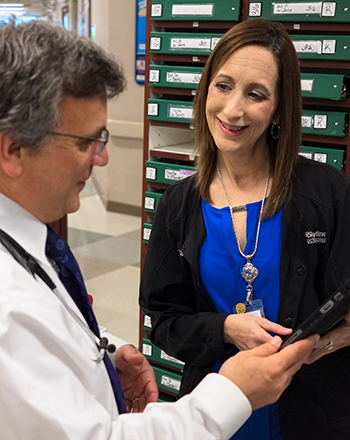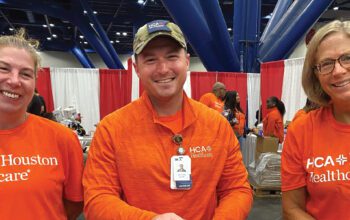One in three hospital patients is affected by malnutrition, an issue Donna Harrell takes seriously.



Donna Harrell
The average person might not think much about malnutrition, but at HCA Healthcare, it’s always top of mind.
“Malnutrition causes a number of problems, most obviously weight loss, which can lead to increased readmissions,” says Donna Harrell, who worked as a clinical nutrition manager and clinical dietitian at Skyline Medical Center in Nashville, Tennessee, for 20 years before becoming a food and nutrition analyst at HealthTrust. “Patients who are malnourished are twice as likely to develop pressure ulcers and three times as likely to have surgical site infections. Forty-five percent of patients who fall in the hospital are malnourished.”
A few years ago, Skyline’s clinical nutrition team set out to change that. Dietitians identified at-risk patients using a validated malnutrition screening tool developed in Meditech. They would then deliver that patient list to the clinical documentation improvement (CDI) team, who would give it to physicians for diagnosis. The process took time, and hundreds of requests each month created a backlog.
In 2012, the new guidelines for malnutrition validated the clinical characteristics needed to support the diagnosis of malnutrition. One doctor asked if the information could be pulled into the physician notes (pDoc), so that’s where the team started. Five key elements from the nutrition assessment were linked to pDoc, allowing the physician to review, edit and document malnutrition and other related nutrition diagnoses.
“With this tool, the physician can easily pull the information into their notes, which improves documentation and reimbursement for malnutrition and other nutrition-related problems,” says Harrell. “The improved reimbursement also gives malnourished patients more paid days in the hospital to heal, which can lead to better outcomes.”
It’s a team effort, and it’s been so rewarding to see that with proper treatment of malnutrition, you can help create better outcomes for patients.— Donna Harrell
Skyline started using the new method with hospitalists, but surgeons and chief medical officers soon asked that the information be added to other documents, such as discharge summaries. That led to the formation of a division-wide team of CMOs, CDIs, clinical informatics personnel, project managers and more who worked to roll the program out to the TriStar division. Marie Birdsong, division clinical specialist-pDoc/notewriter, played a pivotal role in helping get the information into the pDoc notes, and Dr. Tama VanDecar spearheaded efforts to get the program to hospitalists. The project will soon roll out company-wide.
“Everybody I worked with on this project provided really valuable input, and that’s the only way this works,” says Harrell. “It’s a team effort, and it’s been so rewarding to see that with proper treatment of malnutrition, you can help create better outcomes for patients.”


